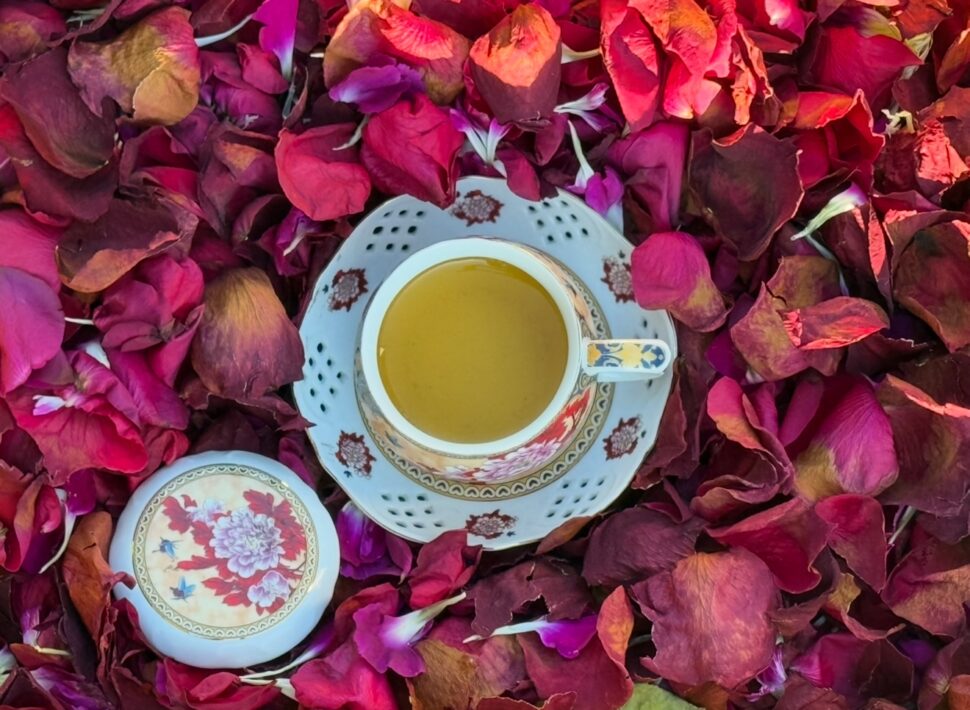lifestyle
Flowering tea – a variety of colours and tea craftsmanship

Flowering tea, also known as blooming tea, is becoming increasingly popular in Poland. It is most often chosen as a special gift for a loved one – a beautiful flower hidden in a tea ball, which blooms during the brewing process, delights with its unusual setting. However, the question often arises as to how to brew this tea correctly. It is worth learning the correct techniques and the differences between the different types of flowering tea.
What is flowering tea?
In shops, flowering teas are often presented as unique drinks that turn into beautiful flowers when brewed. Before brewing, they look like inconspicuous, greyish balls, but when they come into contact with hot water, they transform into striking floral compositions. This is where their charm lies – a small roll of leaves is transformed into an enchanting shape.
Choosing the right flowering tea
Deciding on the right flowering tea can be difficult. Most are made from white or green tea leaves. There are also black tea versions, although these are less common as the darker infusion can reduce the visibility of the flowers. Regardless of the type of leaf, each of these teas offers an interesting visual and taste experience. They are made from leaves that can withstand high temperatures and stems that are delicate and easy to bind.
Flower compositions
Flowering teas are made not only from tea leaves but also from flowers. The most commonly used flowers are lychee (pink), lily (pale yellow), osmanthus (orange) and jasmine (almost white). It is important that these flowers retain their colour after having hot water poured over them. Improperly selected flowers, such as cornflower, can fade and lose their aesthetic qualities after brewing.
The art of rolling flowering teas
Flowering teas come in a variety of shapes – from classic spheres to more fanciful figures. It is important to note whether the flower is on the outside or hidden inside the leaf. Those with visible flowers are easier to brew and are recommended for tea drinkers who have not used made this kind of tea before. Hidden flowered teas require more precision – a small mistake during brewing can result in the composition failing to develop.
Brewing technique for flowering teas
For the best visual and taste effect, the correct brewing technique should be used:
Water before tea – Pour the water into the pot first and only then place the ball of tea in the pot. Otherwise, the ball may develop asymmetrically.
Water temperature – Teas with visible flowers can be brewed at temperatures as low as 75-80°C. Those with hidden flowers require a higher temperature – around 85-90°C.
Teapot warming – The glass teapot should be pre-warmed with hot water to minimise the temperature drop during brewing.
Brewing time
Brewing time depends on the specific flowering tea. The process should be completed when the flower is fully developed. Although some sellers recommend brewing the same ball over and over again, in practice this is unsuccessful – the flower has already bloomed and the tied leaves will not add any more flavour to the brew.
Flavoured or natural?
Flowering teas can be flavoured with aromas such as jasmine, strawberry or cream. However, it is worth choosing varieties without added flavourings as the natural scent of the flowers used provides a sufficient aroma and flavour experience.
Flowering teas are not only a drink, but also a unique work of art, which allows you to appreciate the beauty of nature and the precision of craftsmanship.


